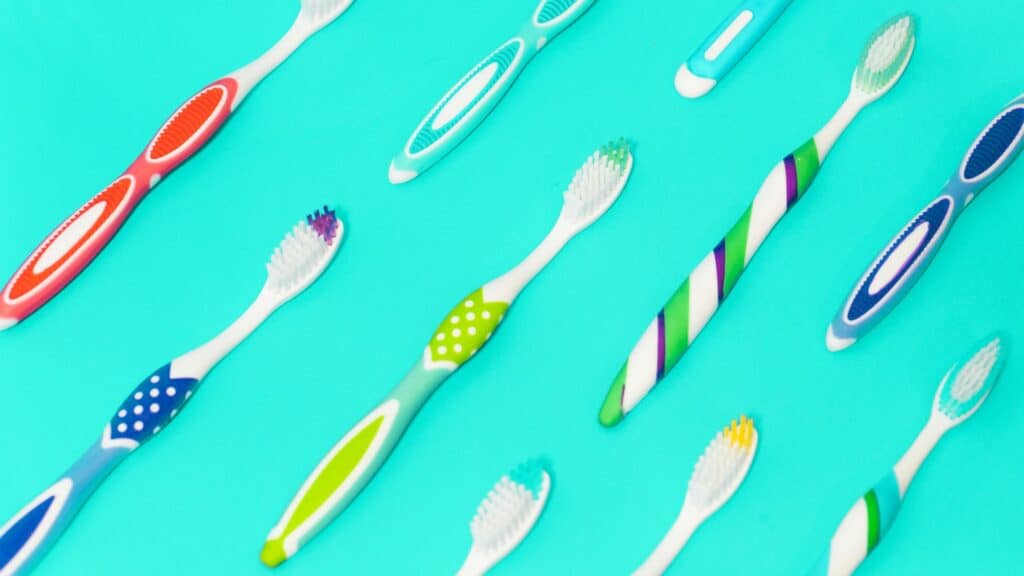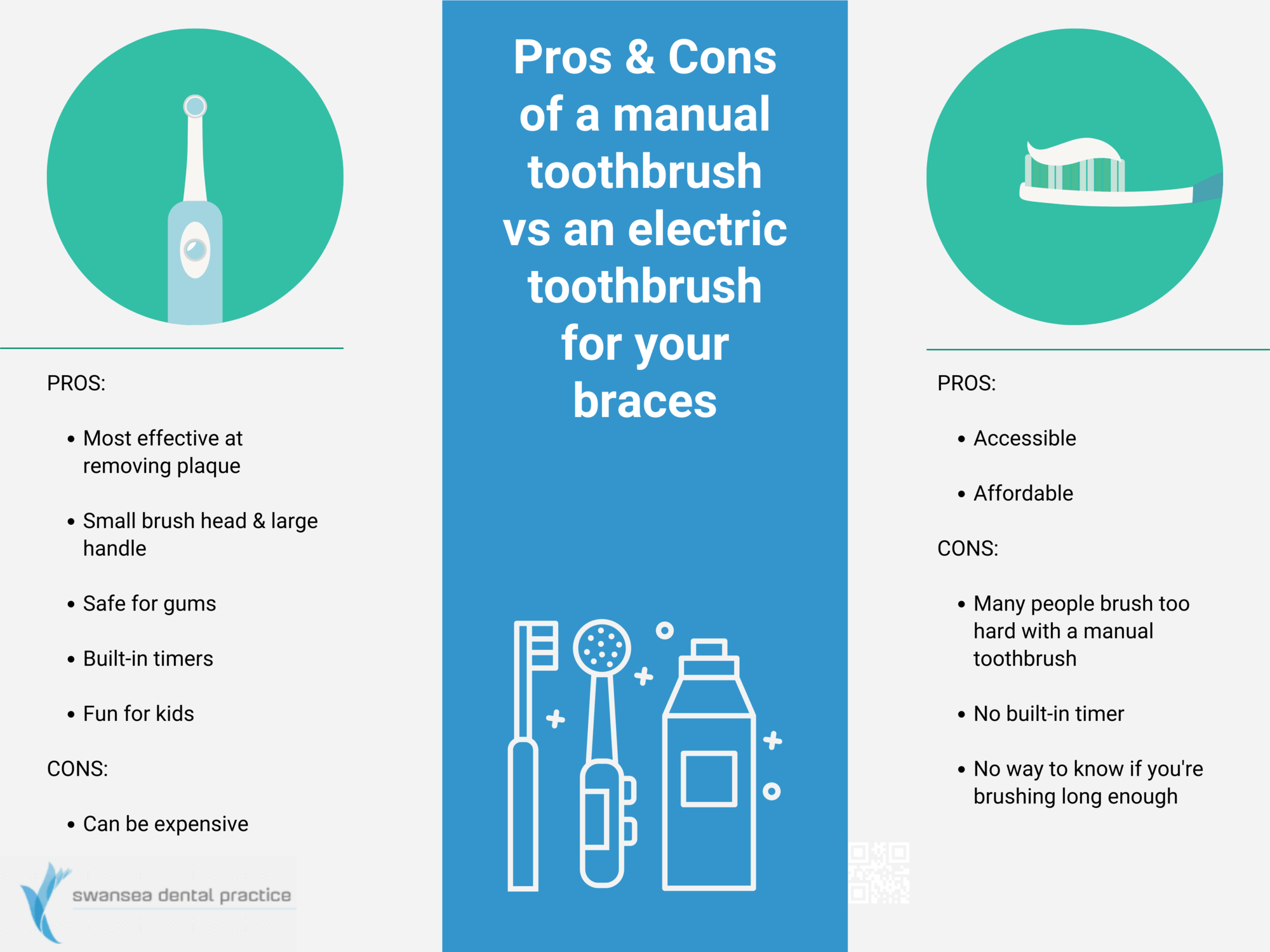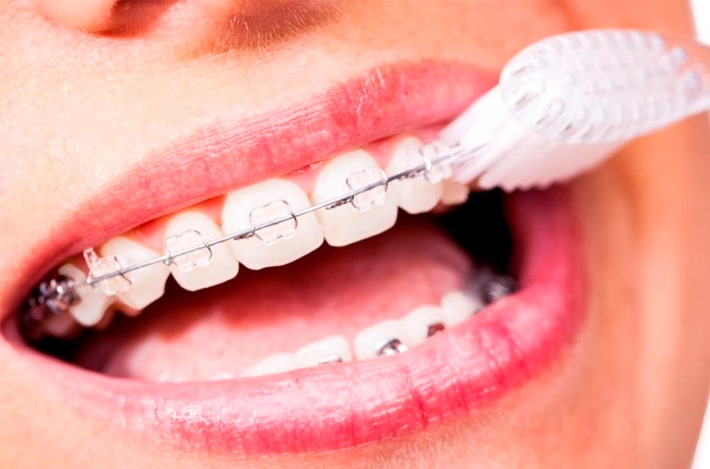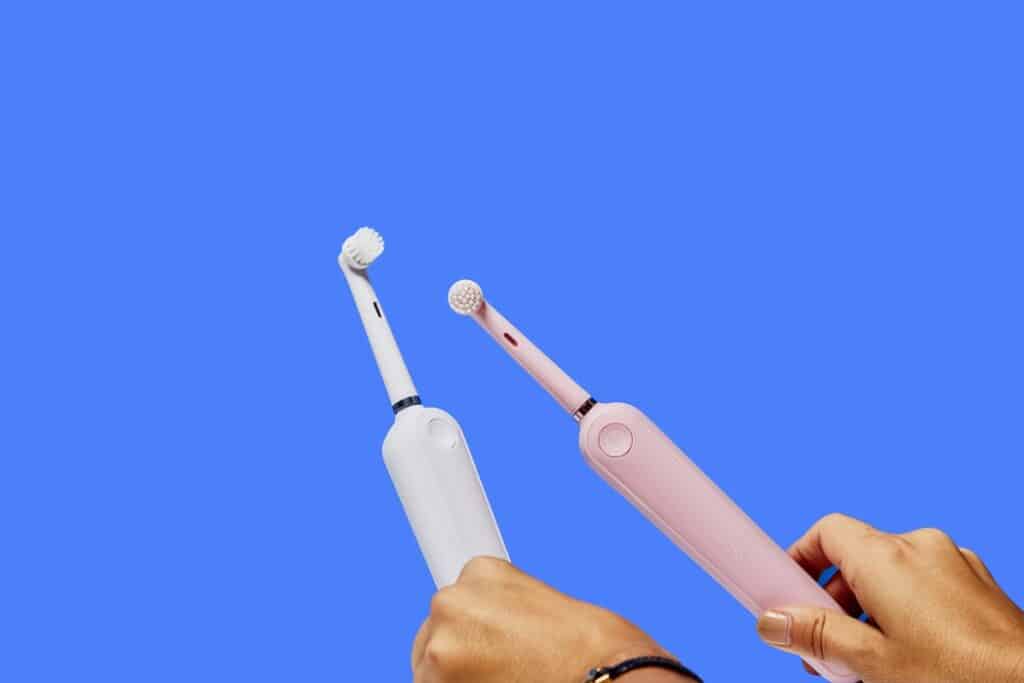If you’re currently wearing braces, oral health and hygiene is now more important than ever. For some perspective, the Australian Institute of Health and Welfare reported that Aussies over the age of 15 years had an average of 11 teeth with cavities, while one in four children had cavities in their baby teeth — and that’s without braces.
While braces themselves don’t cause cavities, they can make plaque and tooth decay more likely. With brackets and wires on your teeth, it can be more challenging to brush — food and sugar can attach itself to the brackets, and it can be difficult to get the bristles into those hard to reach places.
However, if you look after your braces properly, you can reduce the risk of tooth decay and stains. Plus, you can keep bad breath at bay!
One of the most common questions we get from orthodontic patients is how to brush teeth with braces, and what the best toothbrush for braces is.
We want brushing to be as simple and effective as possible for our orthodontic patients, so we’ve put together some recommendations around toothbrushes and brushing in general. Read on!
Choosing the best toothbrush for braces

Image: Unsplash
The main thing to look out for in a toothbrush is the strength of the bristles. We recommend using a soft bristled toothbrush to gently remove food, sugar, and plaque from your teeth. It’s also important not to brush too hard as this can damage the wires and bands on your teeth.
It’s quite common for people to brush too hard with a manual toothbrush even without braces — so be careful!
Some other considerations include:
- A small brushing head. The Australian Dental Association recommends a brush with a small head and a flexible neck to clean around your braces.
- A wide handle. This will help with manoeuvring around the brackets on your teeth. These toothbrushes are also recommended for children who aren’t quite used to brushing their teeth yet.
The good news is that you aren’t necessarily limited to the type of toothbrush you use i.e. electric vs manual. Each come with their own advantages and disadvantages:

There are also special toothbrushes and tools available on the market to make cleaning your teeth, gums, and braces easier:
- Orthodontic toothbrushes. These toothbrushes have soft tapered bristles and a “U” shape for effective cleaning around the brackets. The soft and slim bristles make it easier to sweep away food and plaque along the gum line as well as the narrow gaps between your teeth.
- Interdental brush. These tiny toothbrushes are designed to clean the gaps between your teeth. This can help with flossing while wearing braces — gently brush between your teeth to keep your gums healthy and your teeth clean. You can find interdental brushes at your local pharmacy — there are even environmentally friendly bamboo options so you can throw them away after use.
- Floss and/or a flossing device. If you don’t have interdental brushes handy, you can use regular floss. However, a floss threader might make flossing easier with braces. A floss threader fits most kinds of floss and can help thread floss under, around, and between orthodontic braces.
All in all, there’s no “one size fits all” option when it comes to the best toothbrush for braces. It comes down to what you’re comfortable using, so long as you make sure to brush after breakfast, mid afternoon, after dinner, and before bed every night.
How to brush teeth with braces

Image: Orthodontics Australia
When you first get braces, you may feel a little lost about how to effectively brush around the brackets and wires. Before you leave our practice, our dentists will show you how to brush teeth with braces and provide some guides for you to take home in case you need some assistance.
Here are some basic tips to help make tooth brushing simple with braces:
- Use Piksters (interdental brushes) to clean under the wire and between each bracket.
- Scrub your teeth horizontally with a toothbrush, making small circles on the surface of your teeth and between the braces. Work right around each side of the jaw from the furthest tooth to the opposite side, working on one tooth at a time.
- Squish the bristles of your toothbrush between the brackets and under the wire to clean between the brackets.
- Brush the other surfaces of your teeth, the biting surfaces and the tongue side of your teeth as you normally would.
- Brush the chewing surface of all your teeth.
- Rinse your mouth with water or mouthwash.
- Smile and check your teeth in the mirror. Your braces should be shiny, clean, and free of food.
Ask our experienced dentists about the best toothbrush for your braces
Need some more advice about buying a toothbrush for your braces?
Give our team a call on (02) 4971 1432 to book your regular orthodontic check-up and ask us about the best toothbrush for braces. We’ll provide expert recommendations and advice about toothbrushes and the ideal oral hygiene practices to keep your teeth and gums healthy throughout your orthodontic treatment.

